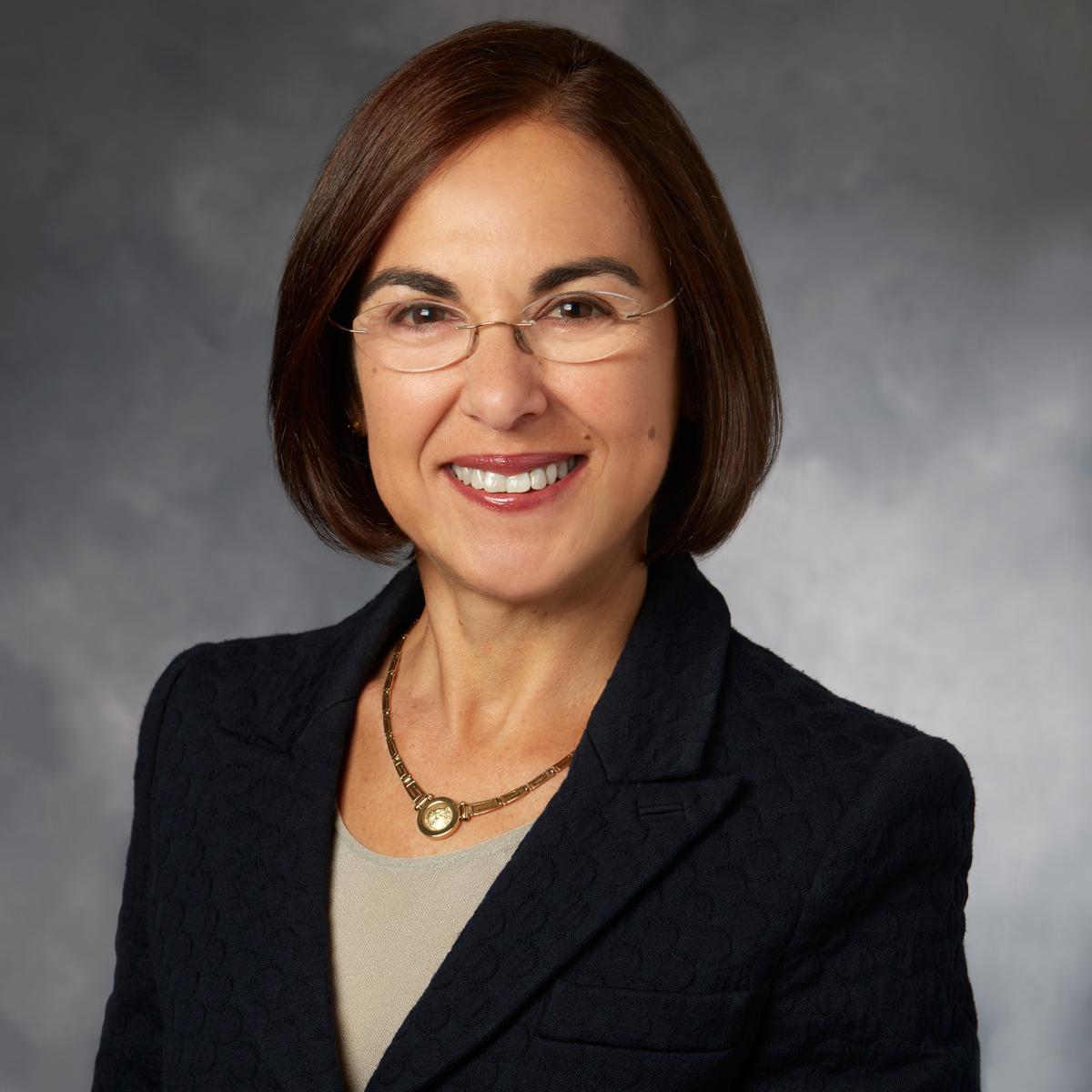 By Lidia Schapira, MD, FASCO
By Lidia Schapira, MD, FASCO
Cancer.Net Editor in Chief
We hear from patients that they are told by friends: “Educate yourself, have hope and courage, get support.” Information and education can help patients and family caregivers prepare for the rough times ahead and contribute more thoughtfully to conversations about treatment options, as well as help patients feel as though they are active participants in their own care. These tasks support healthy coping and foster resiliency as patients and families face the challenge of living with and through cancer.
Data support the contention that good communication leads to improved health outcomes and supports coping. Our professional community has come a long way in recognizing the importance of good communication in clinical encounters, but less is known about the value and role of patient education, both as a measure of quality cancer care and as a mediator of measurable outcomes.
Communicating Information
“Patient-Clinician Communication: American Society of Clinical Oncology Consensus Guideline,” published in 2017, clearly states that one of the goals of communication is to convey adequate information.1 The communication framework endorsed in this guideline specifically addresses the importance of respecting a patient’s “right to know.” We can interpret this to mean not only the right to know one’s diagnosis, but also the right to make an informed treatment decision. As a community, we have not rigorously studied or even addressed how to provide information or how to tailor information so that it truly meets individual needs. Since the objective of providing information is to help patients and family caregivers feel prepared for the challenges they will encounter during cancer treatment, it seems too important to ignore, and too simple to imagine, that a single product or source will meet the needs of all patients.
Although we agree that patients need access to high-quality information, including cost and toxicities of specific treatments, there is no standard approach to meeting this need. Patients may receive fact sheets prepared and vetted by clinicians and educators at their clinic or they may only receive brochures prepared by a pharmaceutical company designed specifically for a particular product. For more than 15 years, ASCO, with the support of ASCO’s Conquer Cancer Foundation, has provided a patient education program, including Cancer.Net and its ASCO Answers print materials. These resources—in written, online, and multimedia formats—bring ASCO’s expertise and resources to people living with cancer and those who care for and about them. Other nonprofit organizations such as the American Cancer Society and the Cancer Support Community also devote considerable resources to creating reliable content.
ASCO’s guideline further encourages oncologists to prepare appropriate handouts in advance of a visit and to use visual aids. This requires an element of anticipation and preparation that can be easily missed if it is not incorporated into clinical workflows. There are multiple benefits of providing scientifically accurate information that is relevant, updated, and easy to use. Research shows that disorganized and inefficient clinics make it more difficult for patients to trust their doctors. Providing a packet of information conveys respect, assists patients and family caregivers to identify their own questions and concerns, and acknowledges the importance of making decisions that are concordant with personal goals.
Informed Patients Make Better Partners
Patients are acutely aware of the precious and limited time they have available for discussion during office appointments. Many patients have acknowledged that if they already had foundational knowledge of concepts that were being discussed, they were better able to participate during consultations. In fact, having patients who are well informed almost always guarantees that more questions are asked and information exchanged, leading to greater satisfaction for both the patient and physician and building a productive partnership.
As we think of the cancer care continuum, it is essential to invest resources and time in making sure patients have access to the information they need at every stage of their treatment and well into survivorship. As patients complete active cancer treatment, they are often conduits for transferring important information to primary care clinicians and other specialists. Being equipped with information about their cancer treatment, as well as a clear plan for future surveillance and cancer-specific testing, allows them to move on with greater confidence in their ability to manage their life and find their new baseline for health.
In addition to thinking about the need to inform patients directly, let’s not forget the need to communicate with our primary care colleagues; they also need specific and expert-vetted information on cancer and its treatment. With a growing population of cancer survivors, finding suitable models for co-management requires a fluid and timely exchange of information specific to treatment, prognosis, and long-term effects of cancer therapies.
Engaging Patients in Their Care
We have all met patients who seem confused by different messages from various clinicians involved in their care. The value of providing clear and consistent information lies in minimizing confusion and doubt and helping patients feel more confident in their ability to manage symptoms and regain some measure of control.
Having patients report their symptoms has been demonstrated through clinical trials to improve health outcomes, including survival. Involving patients in their care through early reporting of symptoms and concerns may also help reduce stress and distress. Web-based tools enable patients to report concerns and symptoms in real time and, hopefully, these mechanisms will also allow patients to access resources to address psychosocial needs. By expanding the channels of communication and discussion topics, we now have opportunities to address patient concerns, improve the coordination of necessary services, and improve a patient’s ability to manage their symptoms. The future seems quite bright as we learn to use new technologies to connect patients to the resources they need in order to preserve physical and mental health while undergoing cancer treatment.
Cancer.Net
Designed for a patient audience, Cancer.Net provides information about specific cancer types and treatment and the psychosocial needs of patients and family caregivers. It addresses the phases of the cancer experience—from diagnosis to end of life and survivorship—through brief, content-rich sections, blogs, videos, and testimonials. It provides highlights of scientific meetings through expert-led summaries and podcasts that are transcribed, as well as summaries of ASCO guidelines.
In 2017 alone, Cancer.Net had more than 50 million page views, with more than half the traffic coming from countries outside the United States and 70% of traffic from mobile devices. Cancer.Net has content that addresses concerns for all age groups that spans the multiple domains of quality of life and provides important updates on health maintenance and cancer prevention.
Patient education is not just about providing information about a specific cancer and its treatment. It is also about providing information on how to navigate cancer care, cope with the disease and its after effects, and find the resources one needs to remain psychologically and emotionally whole during and after cancer.
Practical Tips for Oncology Professionals
- Have information available to hand out during consultations, since it can be difficult for people to absorb new details during a meeting. Reading the information to your patient may also serve to explain the vocabulary that is routinely used during medical visits.
- Encourage patients to keep notes or to use a workbook that provides templates and prompts. This can help the patient and the oncology team track concerns and symptoms over time.
- Explore the information needs not only of your patient, but also of family members and caregivers. You may find significant differences in the levels of scientific literacy within members of the same family.
- Provide data in written form when reviewing treatment options. If you routinely give patients a choice between two or three chemotherapy regimens, it is helpful to have written materials to hand out to patients so they can review it before finalizing the decision. When recommending a specific treatment regimen, consider handing out the publication that reported results of the original trial.
- Provide links to resources and sites that you trust and where patients can find answers to common questions about lifestyle, diet, exercise, and other important dimensions of quality of life.
- Familiarize yourself with decision aids available to guide conversations when there are several reasonable options for treatment.
- Designate a member of your team with an interest in patient education to assemble an inventory of materials that can be easily customized and delivered to patients at the time of the visit or sent electronically through your digital portal.
Reference
Dr. Schapira is associate professor of medicine at Stanford University School of Medicine and director of Cancer Survivorship at the Stanford Comprehensive Cancer Institute. She is editor in chief of Cancer.Net.
Originally published in the 2018 ASCO Daily News; reprinted with permission.


Recent posts